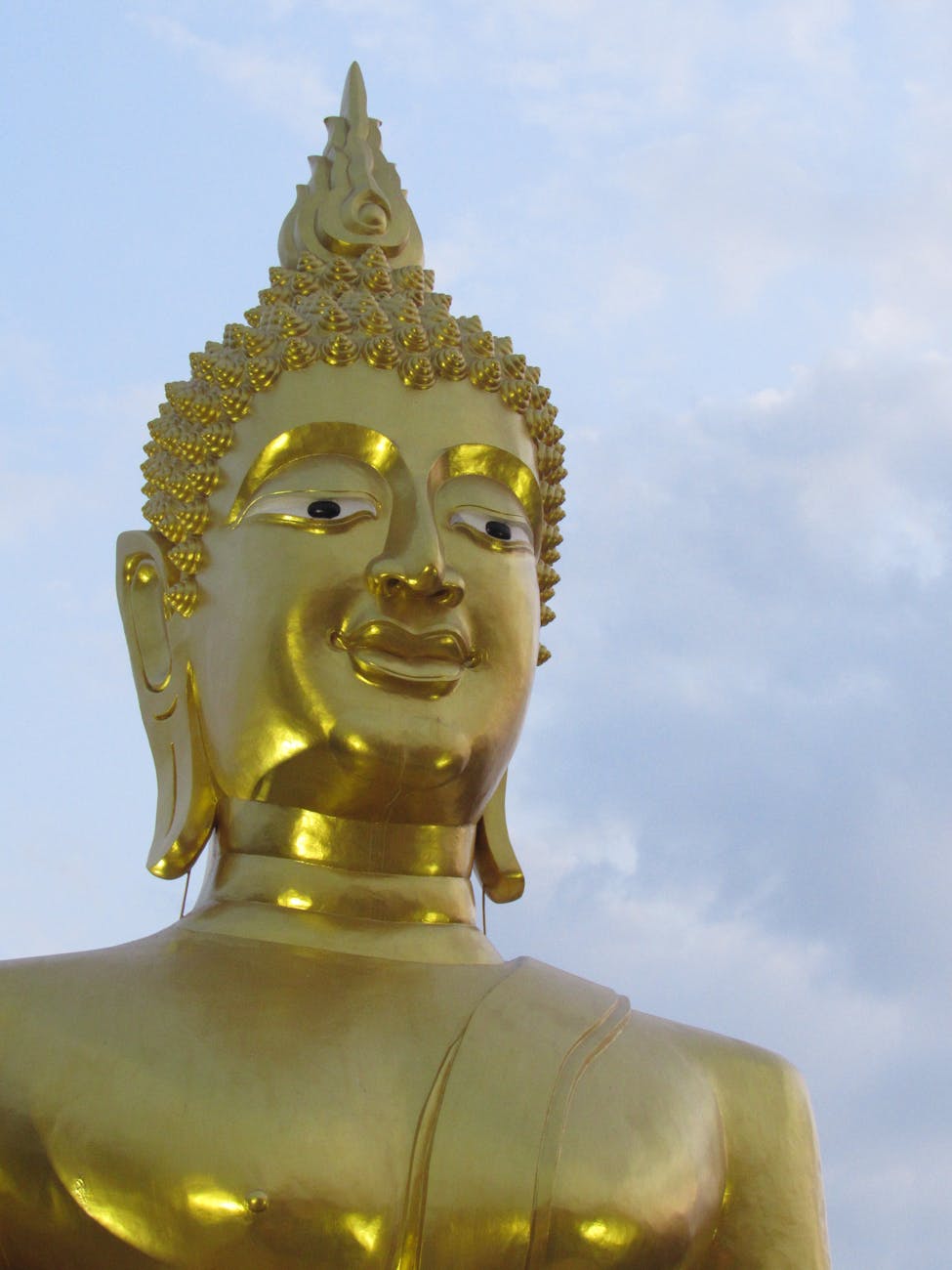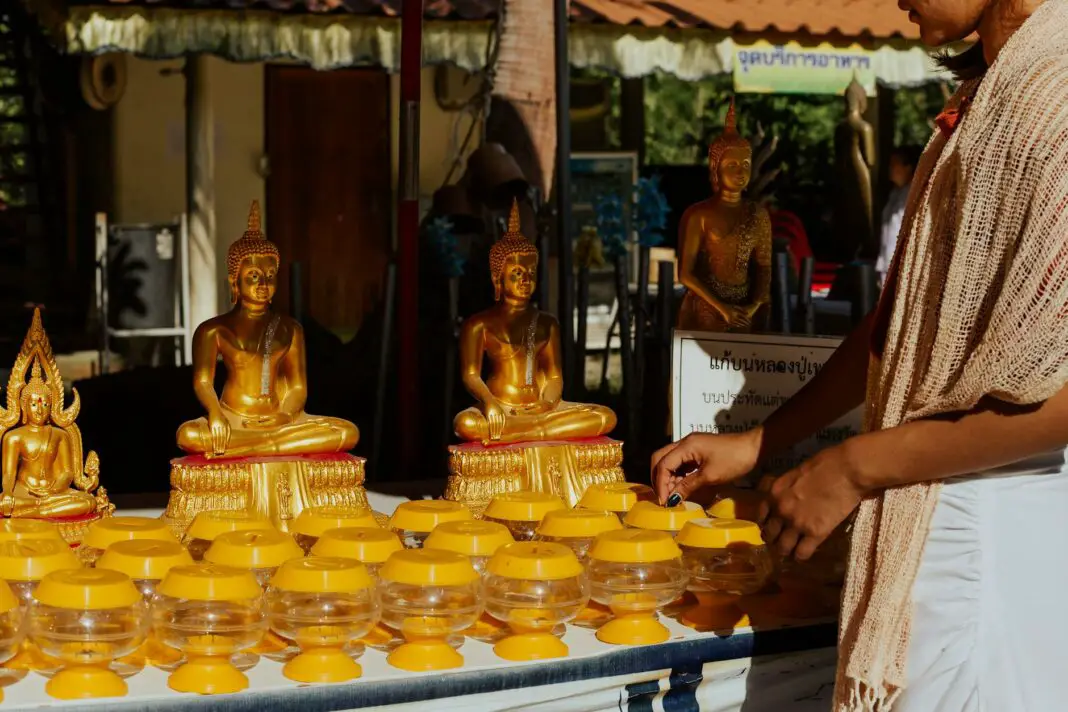A trip to Thailand is more than just a getaway; it’s an immersion into a world where beauty and inspiration leap from every corner. Adding to this allure is a lacework of stunning decorative arts that reflect the rich cultural tapestry of the country. This blog post delves into the secrets behind Thailand’s extraordinary decorative arts, unveiling the techniques, traditions, and inspirations that contribute to this vibrant legacy. You’ll discover the essence of Thai craftsmanship, the history that shapes it, and why it’s a must-know aspect for anyone visiting this Southeast Asian gem.
Join us as we explore the intricate connection between nature and culture in Thai decorative arts, revealing how these elements combine to create a unique visual experience. From the ornate designs of temples to the intricate motifs on handcrafted objects, you’ll gain a holistic understanding of what makes Thailand’s decorative arts so compelling. Prepare to be amazed!
Table of Contents
- Introduction to Thailand’s Decorative Arts
- Cultural Influences on Decorative Arts
- Techniques and Materials Used
- Iconic Arts of Thailand
- The Role of Local Artisans
- Travel Tips for Exploring Thai Decorative Arts
- Enhancing Your Experience
- Captivating Takeaways
- Frequently Asked Questions
Introduction to Thailand’s Decorative Arts
The realm of decorative arts in Thailand is truly captivating, reflecting the nation’s deep-rooted history and a blend of local and international influences. Visitors to Thailand quickly realize that each piece of art tells a unique story, echoing the customs, traditions, and spiritual beliefs of the Thai people. This artistic expression is vividly present in various forms, from the astonishing murals in sacred temples to the intricate pottery crafted in local villages.
Often, one can observe how the natural beauty surrounding Thailand—lush forests, flowing rivers, and vibrant flora and fauna—has profoundly inspired Thai artists throughout the centuries. As you wander through bustling markets or explore charming galleries, the undeniable passion behind each creation becomes increasingly evident. With every glance, the intricate details and elaborate designs capture the imagination, making it impossible not to appreciate the sheer talent of Thai artisans.
Cultural Influences on Decorative Arts
The cultural influences behind Thailand’s decorative arts are multifaceted and deeply intertwined with the nation’s history. The melding of indigenous traditions with layers of external influences, particularly from neighboring countries like India and China, has fostered a unique style distinctly recognizable as Thai. Symbolism plays a critical role in the decorative arts, often drawing on Buddhist themes and mythological tales. For instance, the ubiquitous usage of lotus flowers symbolizes purity and enlightenment, while intricate depictions of mythical creatures reflect spiritual beliefs.
Moreover, the historical significance of the region encourages artisans to integrate traditional narratives into their creations. Festivals and royal influences throughout the ages have catalyzed artistic innovation, encouraging a narrative continuity that is both captivating and educational. It’s fascinating how these cultural threads are seamlessly woven into the decorative arts, creating a sense of identity that resonates deeply with both locals and visitors alike.
Techniques and Materials Used
Diving deeper into the world of Thai decorative arts reveals an array of techniques and materials, skillfully employed by artisans to produce breathtaking results. One of the most notable techniques is the intricate wood carving found in temple structures and furniture, where artisans often spend years mastering the craft. Delicate engraving on wood or metal showcases not only precision but demonstrates a deep respect for the natural grain and properties of the materials.
Additionally, ceramics hold a prominent place in this artistic domain. Thai celadon pottery, famed for its glossy finish and jade green hue, serves as a staple of traditional arts. The craftsmanship involved requires expert knowledge of kiln operations and careful blending of materials that have been refined over generations. By understanding the valuable techniques and materials employed, you gain an appreciation for the expertise and dedication that each piece symbolizes.
Iconic Arts of Thailand
<pWhen exploring Thailand's decorative arts, several iconic forms are guaranteed to captivate your imagination. Perhaps one of the most emblematic is the traditional fabric art known as "Pha Phin," a woven textile featuring elaborate patterns that tell stories of local folklore. Each textile is a testament to the skilled hands of artisans who have perfected these techniques over countless generations, ensuring that this rich heritage continues to thrive. The vibrancy of the colors used in textiles often represents the region's culture, showcasing stunning local flora and fauna.
Moreover, traditional Thai Buddha sculptures deserve special mention. Made from diverse materials such as bronze, marble, and wood, these sculptures offer stunning variations in style across different regions. Their meticulous design not only serves aesthetic purposes but also reflects spiritual beliefs inherent to Thai culture. From large temple displays to personal talismans, these artistic masterpieces are imbued with reverence, showcasing what makes the iconic arts of Thailand so varied and intense.
The Role of Local Artisans
Local artisans are the heartbeat of Thailand’s decorative arts landscape, representing generations of craftsmanship and legacy. Most artisans learn their trade from elders, who impart knowledge deeply rooted in cultural practices. This mentorship contributes significantly to the preservation of traditional techniques, forging a connection between past and present that’s almost palpable. What’s fascinating is the dedication artisans have to their trade; many prioritize quality over mass production, ensuring each piece reflects their personal story and heritage.
As global tourism continues to grow, many artisans remain committed to authentic craftsmanship, thus providing visitors with unique, handmade items that embody Thai culture. Supporting local artisans goes beyond mere shopping; it fosters community growth and preserves traditions that might otherwise fade in an era of globalization. Therefore, when you purchase a decorative art piece directly from a local artisan, you’re not only acquiring a valuable souvenir but also contributing to the sustainability and vibrancy of Thai culture.
Travel Tips for Exploring Thai Decorative Arts
Embarking on a journey through Thailand with a focus on decorative arts is rewarding, but some travel tips can enhance your experience significantly. Start by exploring local markets, such as Chiang Mai’s Night Bazaar or Bangkok’s Chatuchak Weekend Market, where you can discover a range of handcrafted items directly from local artisans. You’ll not only find unique pieces but will also have the opportunity to learn about the craft’s history from the creators themselves.
Additionally, consider taking part in workshops where you can try your hand at traditional crafts, such as batik painting or pottery. Learning from skilled instructors can provide invaluable insights into the techniques they utilize while giving you a personal connection to your creations. Engaging with art in this interactive manner allows for a deeper appreciation of the artistry that defines Thailand—an experience you’ll cherish long after you leave.
Enhancing Your Experience
Moving beyond mere observation, there are numerous ways to immerse yourself in the rich tapestry of Thai decorative arts. One effective way is to document your journey through photographs and notes, chronicling the stories behind the pieces that resonate with you. Consider visiting galleries that showcase both traditional and contemporary works, as this comparison will deepen your understanding of how tradition evolves within the context of modern Thailand.
Moreover, engaging with local communities allows for a wonderful exchange of ideas and cultural practices. Participating in cultural festivals focused on art can also enhance your experience, as these events often showcase live demonstrations, workshops, and exhibitions. By becoming an active participant rather than just a spectator, you gain a much more profound understanding of the exquisite beauty that lies within Thailand’s decorative arts.
Inspirational Insights from Thailand’s Decorative Arts
The secrets behind Thailand’s stunning decorative arts are woven into the fabric of the country’s culture and history, creating a vibrant mosaic that enchants all who experience it. From the breathtaking craftsmanship of local artisans to the rich symbolism infused in each piece, one cannot help but be inspired by the traditions that thrive in this beautiful nation. The dedication to preserving and innovating in these arts presents an opportunity not just for appreciation but also for connection with the timeless narratives each artifact holds.
As you plan your adventure to Thailand, remember to embrace the stories behind the art, recognize the talented hands that bring it to life, and perhaps even leave with a handcrafted piece that speaks to you. Carry this connection beyond your travels, as every piece serves as a reminder of the remarkable journey through the heart of Thailand’s vibrant decorative arts.
Frequently Asked Questions
- What forms of decorative arts can I see in Thailand?
Visitors can encounter a variety of decorative arts, including traditional textiles, ceramics, sculpture, and intricate carvings. - Where should I shop for authentic Thai decorative arts?
Local markets in cities like Chiang Mai or Bangkok offer a plethora of crafted items straight from artisans. - Can I participate in workshops while in Thailand?
Yes, many communities and tourist destinations offer workshops for hands-on experiences in crafts like pottery and fabric design. - What is the significance of symbolism in Thai art?
Symbolism serves to express cultural beliefs and narratives, often referring to Buddhist themes or folklore. - Why is supporting local artisans important?
Supporting local artisans helps preserve traditional crafts and contributes to community sustainability, ensuring cultural heritage thrives.
Image Credit: Pexels





